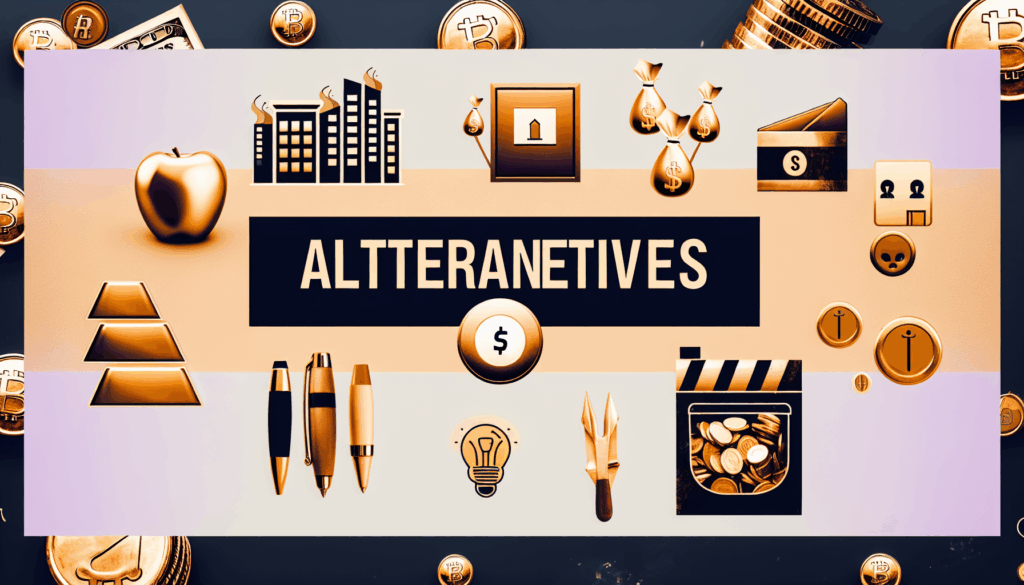Traditional portfolios typically consist of stocks and bonds, but savvy investors are increasingly looking beyond these conventional options to diversify their holdings and potentially enhance returns. Alternative investments offer unique opportunities to spread risk across different asset classes while potentially accessing new income streams and growth potential.
Alternative investments are financial assets that don’t fall into the traditional categories of stocks, bonds, or cash. These investment strategies can provide portfolio diversification, inflation protection, and access to markets that traditional investments might not capture. While they often require more research and may carry different risk profiles, alternative investments beyond stocks and bonds can play a valuable role in a well-rounded investment strategy.
What Makes Alternative Investments Different?
Alternative investments typically have characteristics that distinguish them from traditional assets. They often have lower correlation with stock and bond markets, meaning they may perform differently during various economic conditions. Many alternative investments also offer tangible assets or unique income streams that can provide inflation protection and portfolio stability.
However, these investments often require higher minimum investments, have less liquidity than traditional assets, and may involve more complex fee structures. Understanding these differences is crucial before incorporating alternative investments into your portfolio, especially if you’re working within a structured approach to budgeting for beginners.
1. Real Estate Investment Trusts (REITs)
Real Estate Investment Trusts represent one of the most accessible alternative investments beyond stocks and bonds. REITs are companies that own, operate, or finance income-producing real estate across various sectors, including residential, commercial, industrial, and healthcare properties.
How REITs Work
REITs pool money from multiple investors to purchase and manage real estate properties. By law, REITs must distribute at least 90% of their taxable income to shareholders as dividends, making them attractive for income-focused investors. You can invest in REITs through publicly traded shares on major exchanges, making them more liquid than direct real estate ownership.
Benefits and Considerations
REITs offer exposure to real estate markets without the need for direct property ownership, management responsibilities, or large capital requirements. They provide regular dividend income and potential appreciation as property values increase. However, REITs can be sensitive to interest rate changes and may correlate more closely with stock markets during volatile periods than direct real estate investments.
2. Commodities and Precious Metals
Commodities represent another category of alternative investments that includes physical goods like gold, silver, oil, agricultural products, and industrial metals. These tangible assets often serve as inflation hedges and can provide diversification benefits during economic uncertainty.
Investment Methods
You can gain exposure to commodities through several methods: purchasing physical metals, investing in commodity-focused exchange-traded funds (ETFs), buying shares in commodity-producing companies, or trading commodity futures contracts. Each method has different risk profiles, costs, and storage considerations.
Portfolio Benefits
Commodities often move independently of traditional financial markets and can provide protection against inflation and currency devaluation. Precious metals, in particular, have historically served as stores of value during economic turbulence. However, commodities can be volatile and may not generate income like dividend-paying stocks or bonds.
3. Peer-to-Peer Lending
Peer-to-peer (P2P) lending platforms connect individual investors with borrowers, allowing you to earn interest by funding personal loans, business loans, or other debt obligations. This alternative investment strategy can provide regular income and diversification beyond traditional fixed-income investments.
How P2P Lending Works
Through online platforms, you can review loan applications, assess borrower creditworthiness, and choose which loans to fund. Your investment is typically spread across multiple loans to reduce the impact of any single default. Interest payments from borrowers provide your return on investment.
Risk and Return Profile
P2P lending can offer higher yields than traditional savings accounts or bonds, but it also carries credit risk if borrowers default. The loans are typically unsecured and not FDIC-insured, making thorough due diligence essential. This investment strategy works best when you have a solid foundation in smart investment strategies and understand credit risk assessment.
4. Cryptocurrency and Digital Assets
Cryptocurrency represents a newer category of alternative investments that has gained significant attention in recent years. Digital assets like Bitcoin and Ethereum operate on blockchain technology and offer exposure to potentially transformative financial technologies.
Understanding Digital Assets
Cryptocurrencies are decentralized digital currencies that use cryptographic techniques for security. Beyond basic cryptocurrencies, the digital asset space includes utility tokens, governance tokens, and non-fungible tokens (NFTs). Each type serves different purposes within various blockchain ecosystems.
Investment Considerations
Cryptocurrency investments are highly volatile and speculative, with prices subject to dramatic swings based on market sentiment, regulatory changes, and technological developments. While some investors have seen substantial returns, others have experienced significant losses. This asset class requires careful position sizing and should represent only a small portion of most investment portfolios.
5. Art and Collectibles
Physical collectibles like art, rare coins, vintage wines, and memorabilia represent alternative investments that combine passion with potential financial returns. These tangible assets can appreciate over time while providing personal enjoyment and cultural value.
Market Dynamics
The art and collectibles market operates differently from traditional financial markets, with prices influenced by rarity, condition, provenance, and cultural trends. Authentication, storage, and insurance are important considerations, as these assets require proper care to maintain their value.
Investment Approach
Successful investing in art and collectibles typically requires specialized knowledge or professional guidance. Market liquidity can be limited, making these investments less suitable for short-term financial needs. However, for investors with expertise in specific areas and longer investment horizons, collectibles can provide both diversification and personal satisfaction.
Implementing Alternative Investment Strategies
Before incorporating alternative investments beyond stocks and bonds into your portfolio, ensure you have a solid financial foundation. This includes having an emergency fund, manageable debt levels, and a clear understanding of your investment goals and risk tolerance. Consider consulting with a financial advisor who understands alternative investments and can help you determine appropriate allocation levels.
Alternative investments should typically represent a smaller portion of your overall portfolio, particularly when you’re starting out. Begin with more accessible options like REITs or commodity ETFs before exploring more complex alternatives. Remember that diversification within alternative investments is just as important as diversification across asset classes.
Conclusion
Alternative investments beyond stocks and bonds offer compelling opportunities for portfolio diversification and potentially enhanced returns. From REITs and commodities to peer-to-peer lending and digital assets, these investment strategies can help you build a more resilient portfolio that performs well across different economic conditions.
However, alternative investments require careful research, appropriate risk management, and a clear understanding of their unique characteristics. Start with thorough education, consider your overall financial situation, and gradually incorporate alternative investments as part of a well-balanced portfolio strategy. With proper planning and execution, these alternative investment options can help you achieve your long-term financial goals while reducing dependence on traditional stock and bond markets.



